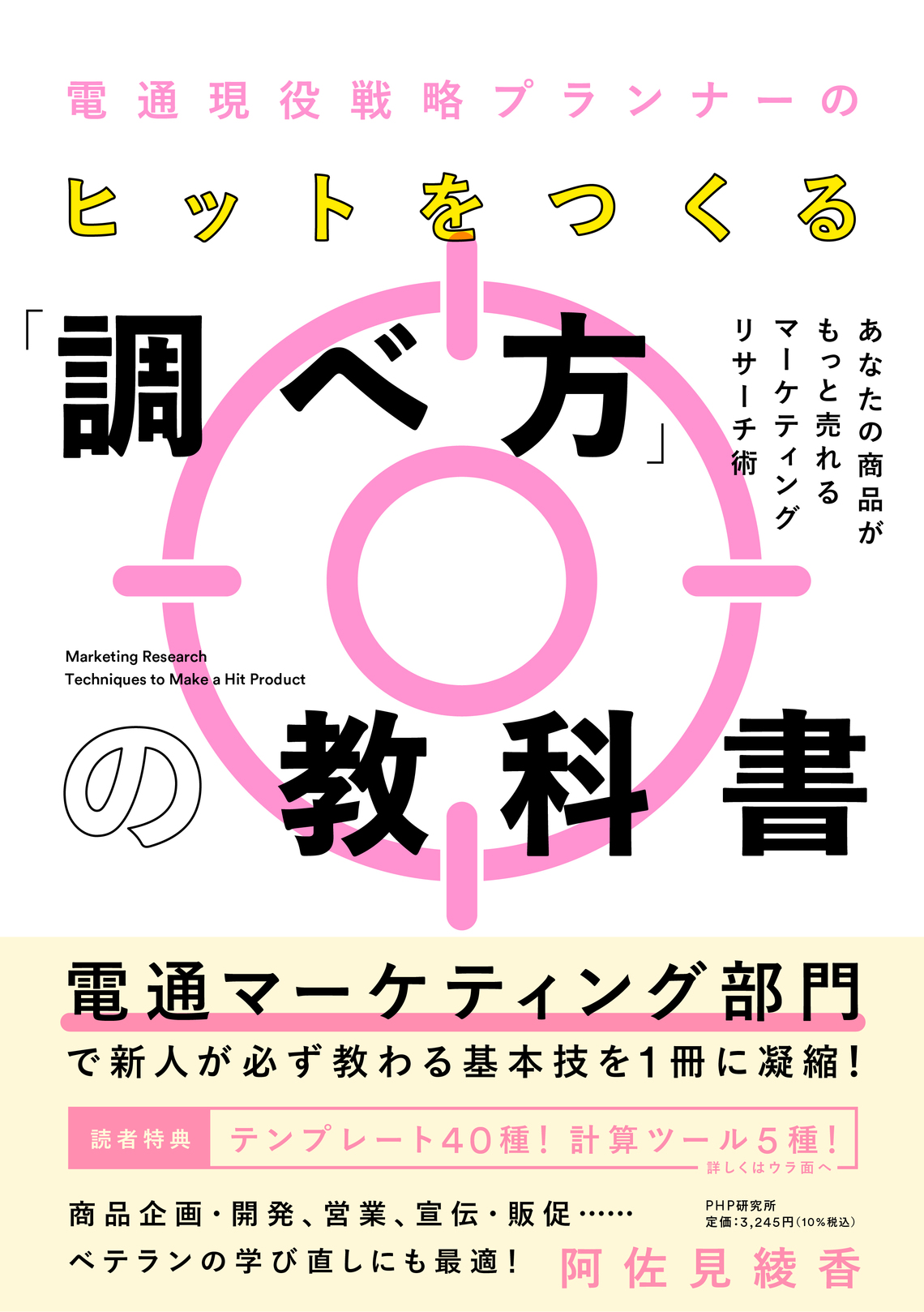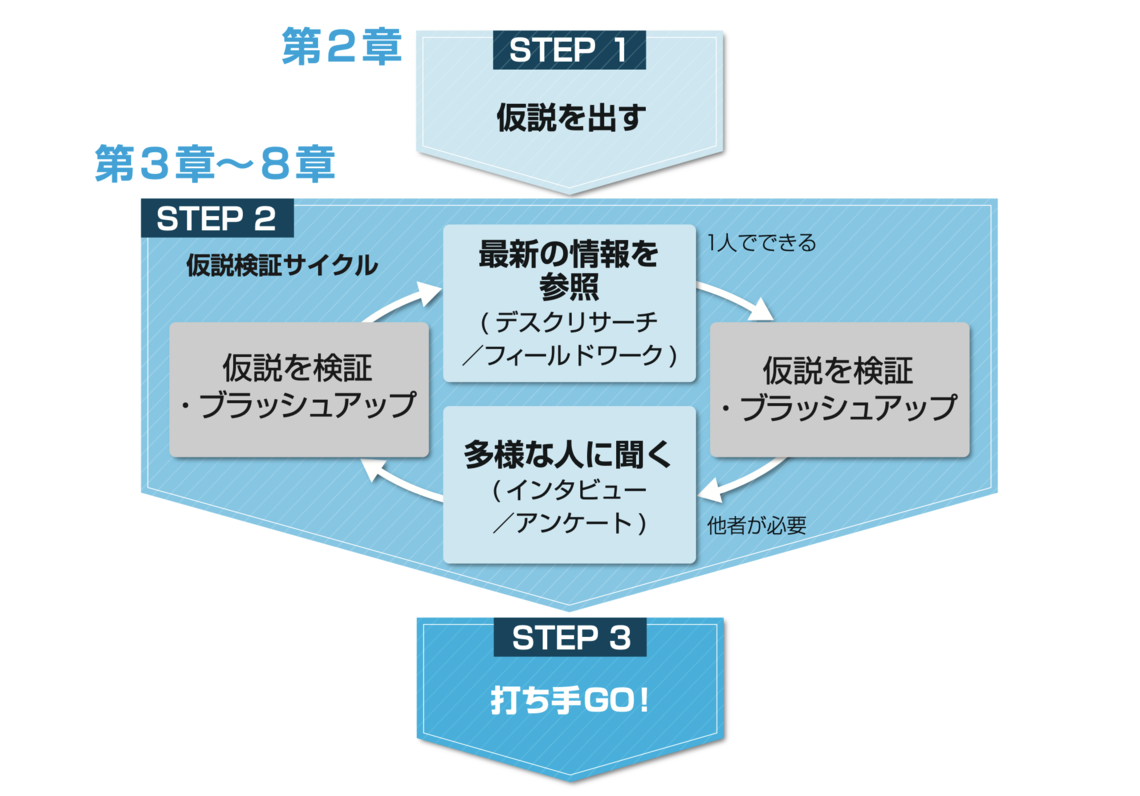You put your heart and soul into creating a product, but it just isn't selling as well as you hoped... Where could the problem lie? Ayaka Asami, author of " The Hit-Making Research Method Textbook by a Current Dentsu Inc. Strategic Planner" and a current strategic planner at Dentsu Inc., states , " Simply changing your 'research method' can lead to mass-producing hits."
This series will share research methods that directly lead to business success. The theme of Part 1 is " The Single Mindset Hit Makers Possess. " We'll reveal the pitfalls hidden in the everyday act of "research" performed by many businesspeople and introduce the proven framework for hit-generating research.
Traps Even Veterans Fall Into
"We thought this product would definitely sell because it was based on a past hit... What went wrong...?"
"I have no idea how to grow sales for this service we worked so hard to create..."
These are common concerns I hear from clients I work with. While their products or services are undoubtedly innovative, they often struggle to achieve success. The root cause almost always lies in failing to communicate the true value of the product or service to the right audience with the right message. In other words, the problem usually stems from misidentifying the "target audience" and " selling points" needed to drive success.
Even products or services that were hits in the past see their target audience's values, behaviors, and the selling points that resonate with them change as times shift. Therefore, even veterans can make significant mistakes if they fail to recognize this.
Conversely, simply setting the "target" and "selling points" accurately can turn even products or services that struggle to sell or find growth into hits. It also enables the development of new products and services that generate hits.
So, what is necessary to correctly identify the "target" and "selling points"?
Success is 90% about "how you research"
One answer lies in the "method of research." In professional terms, this is called "marketing research."
Currently, I work in the marketing department of an advertising agency, creating strategies to sell our clients' products and services. Crucially, the key skill here is "research." From this point on, think of all mentions of "research" as referring to the "research methods" that create hits.
The role of "research methods" in the marketing process is to quickly narrow down the appropriate "target audience" and "selling points," leading to precise decisions that drive business success. While business and research might seem distant, research is actually directly linked to business success. It's no exaggeration to say that "research methods" account for 90% of making a product or service a hit and guiding the business to success.
However, while I now teach marketing research to new employees every year alongside my client work, I wasn't naturally good at this research from the start. In fact, as a newbie myself, I was very bad at "researching." Coming from a purely liberal arts background, I barely knew how to use Excel. I was constantly overwhelmed, buried under mountains of information, unsure where or how to start. I wasted countless hours and money without finding anything useful—experiences too numerous to count.
Through these failures and trial and error, around the five-year mark, I began to notice a difference in how I researched when products or services hit the mark versus when they didn't.
That difference, as I mentioned at the beginning, is clearly defining the "target" and the "selling point. "
Here, "target" refers to " the customers who will buy your product or service," and "selling point" means " the aspect of your product or service that resonates with the buyer's (i.e., the target's) 'desire to buy.'"
I'll explain in more detail, using a framework, the "research method" for accurately identifying these two elements.
The Framework for Research That Creates Hits
Based on practical experience, we've learned that products that don't sell, despite having inherent value, often suffer from either a misaligned target audience, a misaligned selling point, or both. Conversely, this means that to make a product or service a hit, it's crucial to clearly define these two elements early on.
The framework for the "research method" needed to achieve this is shown in the following diagram.
First, in Step 1, it's okay to start with a "rough idea." Formulate a "hypothesis" about what the "target audience" and "selling points" might be.
A hypothesis is a "tentative answer" derived from the information currently available. While it incorporates an intuitive sense based on experience, it is not a wild guess. Instead, it represents the "most plausible conclusion at this point" considered as a hypothesis.
Without establishing this hypothesis, research efforts become wasted shots in the dark or detours, ultimately requiring enormous costs. That's precisely why it's crucial to first formulate a hypothesis, define what you "want to clarify" through research, and then determine the "methods" for that research.
Next, in Step 2's hypothesis verification cycle, we verify and refine the hypothesis we initially proposed. First, we focus our investigation on the "latest information" related to the hypothesis. Specifically, this involves "desk research"—using the internet or gathering literature at your desk—and "fieldwork"—visiting locations where products are displayed or experiencing similar services firsthand. These research methods can generally be done alone.
Using the information gathered here, verify whether there is any discrepancy between the "target" and the "selling points." For example, if you hypothesized that "the target is women in their 30s to 40s" for a certain home appliance, but upon investigation, you find that "the real target might be women in their 20s," you refine the hypothesis accordingly.
Next, to further refine this accuracy, we gather insights from diverse individuals. Specifically, we conduct interviews or surveys with people who fit the "target" profile. Here, the focus is on verifying "what resonates most with the target audience?" For instance, if the initial hypothesis was that "beauty benefits are the selling point," research might reveal that "time-saving features resonate more strongly!" leading to hypothesis refinement.
Finally, in Step 3, we execute the refined hypothesis as a "strategy."
By conducting research following this framework, the "target" and "selling points" derived from vague intuition become clearly defined. This ultimately enables the mass production of hits.
Mastering research accelerates your business
Since mastering this research method, I've been able to propose actionable strategies that make products and services hit big for clients. For example, the "10-Second Eyelash Extensions" (new partial false eyelashes "EASY LASH") launched in 2019 by "DOLLY WINK," a brand of the long-established cosmetics manufacturer Cozy Honpo produced by Tsubasa Masuwaka, continues to sell at a pace that has surpassed 1.1 million units shipped as of February 2022. This is remarkable considering that selling 80,000 units is typically considered a hit. (The research behind this hit product is detailed in our published book).
Mastering the precise use of research enables you to quickly pinpoint the optimal "target" and "selling points." Conducting research makes the "next move" crystal clear. Improving your research skills gives you a significant advantage in creating hits. In other words, you can succeed in business without wasting money, time, or effort.
Incorporate marketing research into your regular work routine and clearly define your "target" and "selling points." Doing so dramatically increases your chances of achieving a "hit." Your product will reach more and more of the people who truly need it.
'The Hit-Making Research Method Textbook by Dentsu Inc.'s Active Strategic Planner' Now Available! Details Here






